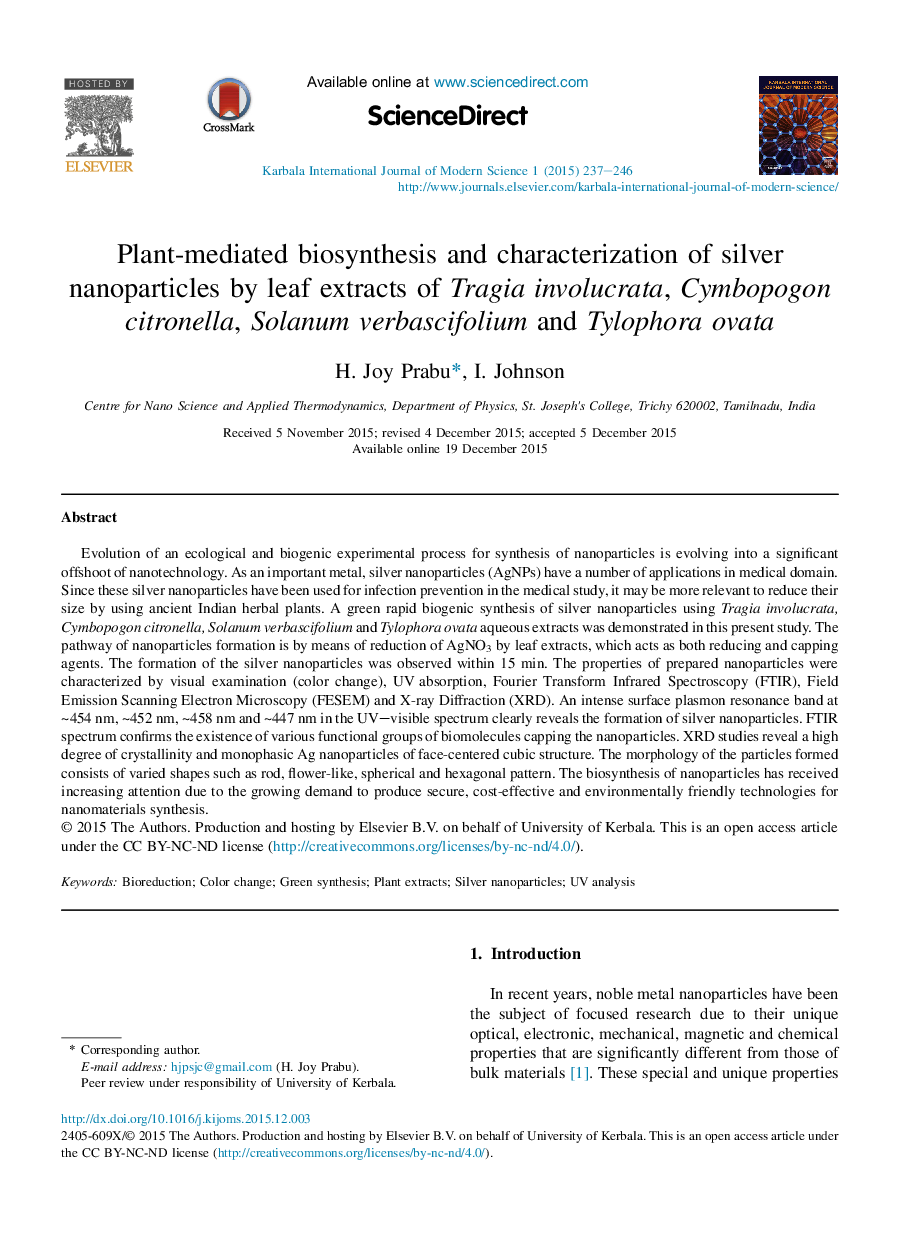| کد مقاله | کد نشریه | سال انتشار | مقاله انگلیسی | نسخه تمام متن |
|---|---|---|---|---|
| 483753 | 1446474 | 2015 | 10 صفحه PDF | دانلود رایگان |

• To reduce the agglomeration, we trailed the special ultra-sonication technique.
• Powder diffraction analysis (XRD) confirmed the crystalline nature of silver nanoparticles.
• The feasible mechanism of action of AgNPs was analysed by using FTIR patterns.
• FTIR pattern revealed the presence of Silver bonding and the functional groups responsible for reduction of Ag nanoparticles.
• Structural morphology of Silver nanoparticles was studied by FESEM analysis.
• Biomolecules of the leaf extract play dual role as both reducing and capping agents.
Evolution of an ecological and biogenic experimental process for synthesis of nanoparticles is evolving into a significant offshoot of nanotechnology. As an important metal, silver nanoparticles (AgNPs) have a number of applications in medical domain. Since these silver nanoparticles have been used for infection prevention in the medical study, it may be more relevant to reduce their size by using ancient Indian herbal plants. A green rapid biogenic synthesis of silver nanoparticles using Tragia involucrata, Cymbopogon citronella, Solanum verbascifolium and Tylophora ovata aqueous extracts was demonstrated in this present study. The pathway of nanoparticles formation is by means of reduction of AgNO3 by leaf extracts, which acts as both reducing and capping agents. The formation of the silver nanoparticles was observed within 15 min. The properties of prepared nanoparticles were characterized by visual examination (color change), UV absorption, Fourier Transform Infrared Spectroscopy (FTIR), Field Emission Scanning Electron Microscopy (FESEM) and X-ray Diffraction (XRD). An intense surface plasmon resonance band at ∼454 nm, ∼452 nm, ∼458 nm and ∼447 nm in the UV–visible spectrum clearly reveals the formation of silver nanoparticles. FTIR spectrum confirms the existence of various functional groups of biomolecules capping the nanoparticles. XRD studies reveal a high degree of crystallinity and monophasic Ag nanoparticles of face-centered cubic structure. The morphology of the particles formed consists of varied shapes such as rod, flower-like, spherical and hexagonal pattern. The biosynthesis of nanoparticles has received increasing attention due to the growing demand to produce secure, cost-effective and environmentally friendly technologies for nanomaterials synthesis.
Figure optionsDownload as PowerPoint slide
Journal: Karbala International Journal of Modern Science - Volume 1, Issue 4, December 2015, Pages 237–246